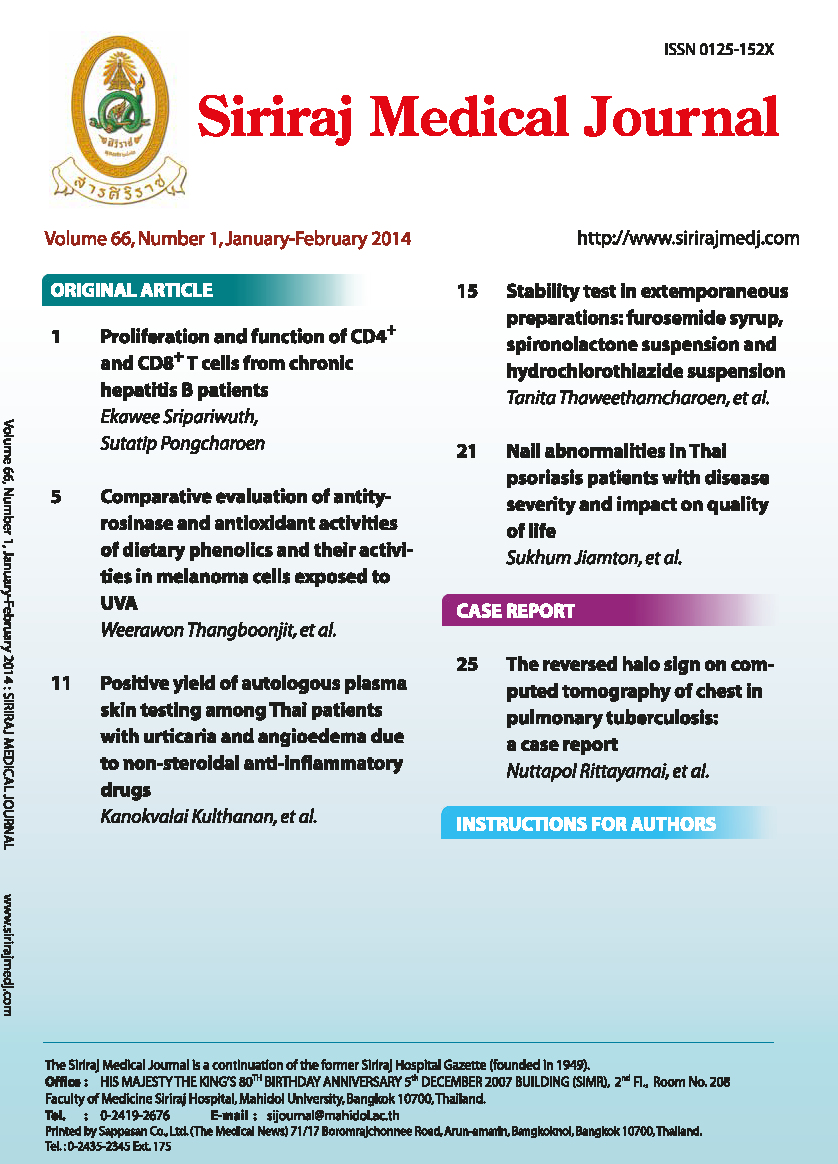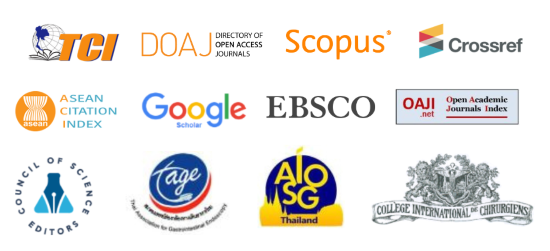Positive Yield of Autologous Plasma Skin Testing among Thai Patients with Urticaria and Angioedema due to Non-steroidal Anti-inflammatory Drugs
Abstract
Background: Non-steroidal anti-inflammatory drugs (NSAIDs) are over-the-counter drugs which are widely used. In Thailand, cutaneous reactions to nonsteroidal anti-inflammatory drugs were frequently angioedema and urticaria. However, there are many limitations of the diagnostic investigations, so the diagnosis is still based on history and clinical manifestation. In 2007, there was a study in Italy, which reported that an autologous plasma skin test (APST) could detect autoreactive state in patients with multiple intolerances to NSAIDs.
Objective: We aimed to investigate whether APST is positive in single and multiple NSAID reactors in the Thai population or not.
Methods: The patients with recent history of urticaria and/or angioedema following the administration of NSAIDs were prospectively recruited. Individuals were classified into two groups (single or multiple NSAID reactors) based on history, clinical manifestation and/or laboratory investigation and then APST was done after at least a month free of symptoms.
Results: Of all sixty-eight patients, thirteen (19.1%) were men and fifty-five (80.9%) were women. The mean age was 42.7 ± 15.0 years (range 17-77 years). In our study, single NSAID reactors (69.1%) were more common than multiple NSAID reactors (30.9%). Multiple NSAID reactors tended to have a personal and family history of atopy (p = 0.030 and 0.012, respectively) than single reactors. APST was positive 19.0% and 10.6% in multiple and single NSAID reactors, respectively. However, there was no statistically significant relationship between positive APST and multiple NSAID reactivity (p = 0.442).
Conclusion: This study showed no statistically significant association between APST positivity and multiple NSAID reactors in Thai patients. However, our study revealed significantly higher proportions of personal and family history of atopic diathesis in multiple NSAID reactors.
Keywords: Urticaria, angioedema, autologous plasma skin testing, multiple NSAID reactor, single NSAID reactor
Siriraj Med J 2014;66:11-14
Downloads
Published
How to Cite
Issue
Section
License
Users are free to share, copy, and redistribute all articles published in the Siriraj Medical Journal (SMJ) in any medium or format as long as you follow the following terms:
- Attribution — You must give appropriate credit, provide a link to the material, and indicate if changes were made. You may do so in any reasonable manner, but not in any way that suggests the publisher endorses you or your use.
- NonCommercial — You may not use the material for commercial purposes.
- NoDerivatives — If you remix, transform, or build upon the material, you may not distribute the modified material.
- No additional restrictions — You may not apply legal terms or technological measures that legally restrict others from doing anything the license permits.







